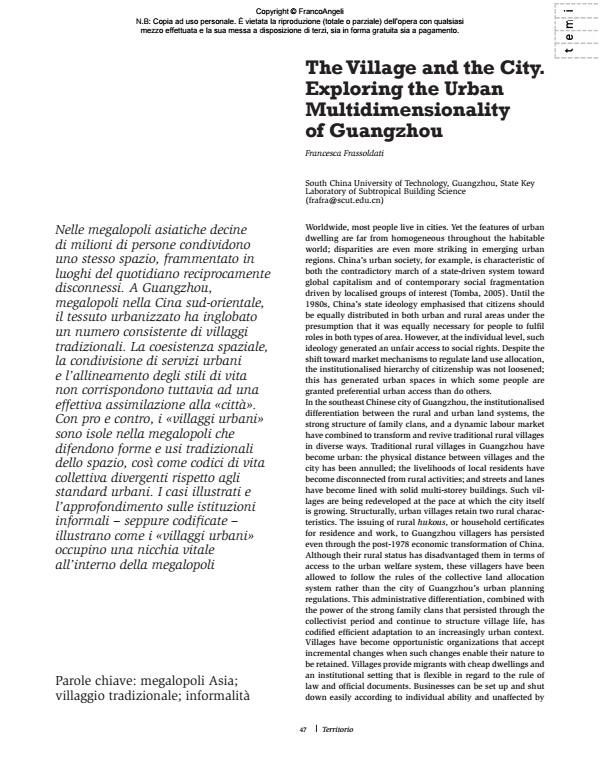The Village and the City. Exploring the Urban Multidimensionality of Guangzhou
Journal title TERRITORIO
Author/s Francesca Frassoldati
Publishing Year 2015 Issue 2015/74
Language English Pages 7 P. 47-53 File size 1050 KB
DOI 10.3280/TR2015-074008
DOI is like a bar code for intellectual property: to have more infomation
click here
Below, you can see the article first page
If you want to buy this article in PDF format, you can do it, following the instructions to buy download credits

FrancoAngeli is member of Publishers International Linking Association, Inc (PILA), a not-for-profit association which run the CrossRef service enabling links to and from online scholarly content.
Nelle megalopoli asiatiche decine di milioni di persone condividono uno stesso spazio, frammentato in luoghi del quotidiano reciprocamente disconnessi. A Guangzhou, megalopoli nella Cina sud-orientale, il tessuto urbanizzato ha inglobato un numero consistente di villaggi tradizionali. La coesistenza spaziale, la condivisione di servizi urbani e l’allineamento degli stili di vita non corrispondono tuttavia ad una effettiva assimilazione alla «città». Con pro e contro, i «villaggi urbani» sono isole nella megalopoli che difendono forme e usi tradizionali dello spazio, così come codici di vita collettiva divergenti rispetto agli standard urbani. I casi illustrati e l’approfondimento sulle istituzioni informali - seppure codificate - illustrano come i «villaggi urbani» occupino una nicchia vitale all’interno della megalopoli
Keywords: Megalopoli Asia; villaggio tradizionale; informalità
Francesca Frassoldati, The Village and the City. Exploring the Urban Multidimensionality of Guangzhou in "TERRITORIO" 74/2015, pp 47-53, DOI: 10.3280/TR2015-074008